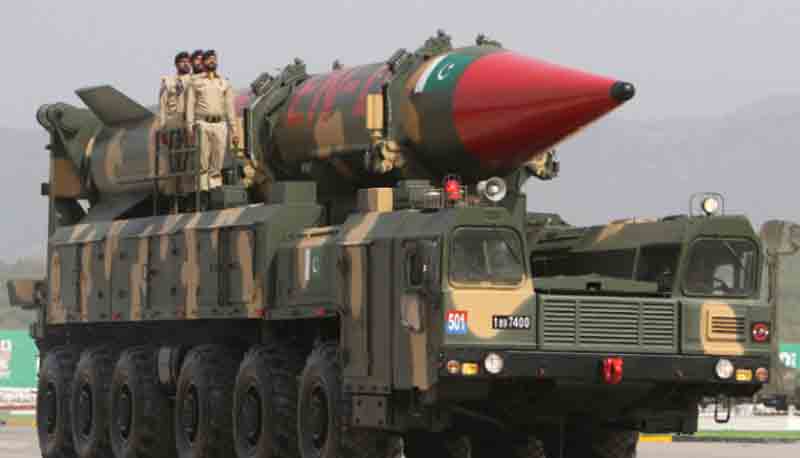In a strategic move likely to reshape the airpower landscape of Southeast Asia, Indonesia is reportedly set to acquire 42 used Chengdu J-10C multirole fighters from China, while also indicating a renewed interest in the previously halted procurement of Russian Su-35s.
Jakarta’s apparent shift towards the Chinese-made J-10C follows the fighter’s recent validation in combat during the intense aerial confrontations between Pakistan and India, where it reportedly outperformed its Western rivals.
While Indonesian defense officials have not yet provided an official confirmation, the well-known defense intelligence platform Alert 5 has indicated that an announcement is anticipated during the forthcoming Indo Defence and Expo 2025, scheduled for June 11–14 in Jakarta. If the deal goes through, it would represent Indonesia’s inaugural frontline acquisition of Chinese combat aircraft and demonstrate a broader strategic diversification aimed at balancing relationships with Western, Russian, and Chinese defense sectors.
Concurrently, Indonesia is also said to be reevaluating the stalled acquisition of the Su-35 “Flanker-E” from Russia, which was put on hold due to geopolitical issues and pressure from Western defense allies. Russian Ambassador to Indonesia, Sergei Tolchenov, reiterated the ongoing validity of the contract, stating, “The contract (Su-35 with Indonesia) has never been cancelled. It is still active. We will resume negotiations someday,” in an interview with the Jakarta Globe.
Indonesia had initially signed a US$1.14 billion (RM4.9 billion) deal in February 2018 to acquire 11 Su-35 fighters, an aircraft regarded as a high-end counterpart to Western 4.5-generation platforms such as the Eurofighter Typhoon and Rafale.
In March 2020, international media reported that Jakarta had put the deal on hold due to increasing diplomatic pressure and the threat of sanctions, particularly under the U.S. CAATSA (Countering America’s Adversaries Through Sanctions Act) framework.
At the same time, Indonesia continues its fighter procurement aligned with the West, with the first six Dassault Rafale fighters scheduled for delivery in February 2026, as part of a 42-aircraft deal valued at RM32 billion.
However, concerns have arisen within Indonesia’s defense community following unverified yet widely circulated reports that Pakistani J-10C fighters managed to shoot down as many as six Indian Air Force jets—allegedly including three Rafales—using PL-15 beyond-visual-range (BVR) missiles during a conflict in Kashmir. Although these claims have been contested by New Delhi, they have sparked renewed discussions among regional air forces regarding the actual effectiveness of older Western platforms when faced with China’s rapidly advancing air combat technologies.
Pakistan’s Foreign Minister Ishaq Dar publicly asserted that five Indian aircraft, including three French-built Rafales, were downed by PL-15E BVR missiles launched from Pakistani Air Force J-10Cs during the incident, with a sixth Mirage 2000 also reportedly destroyed.
Regardless of their accuracy, these combat claims have significantly enhanced the global standing of the J-10C and the PL-15 missile, while also causing a notable decline in confidence regarding the Rafale’s survivability in contested airspace.
At LIMA 2025 in Langkawi, the J-10CE export variant stood out as a highlight of China’s pavilion, capturing significant attention from foreign delegations and analysts due to its contemporary battlefield significance.
“The J-10CE, which is the export variant of the J-10C, became the focal point of China’s exhibit at LIMA 2025 after demonstrating its combat effectiveness, drawing considerable interest from international attendees and military experts alike,” reported Global Times.
CATIC, the state defense export agency of China, is actively promoting the J-10CE as a cost-efficient, high-performance alternative to Western and Russian platforms, particularly targeting nations like Malaysia, Bangladesh, and Indonesia that are looking to modernize with fewer geopolitical constraints. Chinese defense analysts contend that the J-10 series—supported by PLAAF combat experience and rapid technological advancements—has dispelled outdated views of China as a secondary aerospace power.
Since its introduction in 2006, the J-10 platform has become a fundamental part of the PLAAF’s tactical fighter fleet, with over 220 J-10C aircraft currently operational across various air divisions. The latest variant, the J-10C, exemplifies China’s advancement into full-spectrum 4.5-generation combat capability, featuring AESA radar, an advanced digital fly-by-wire system, and domestically produced WS-10B engines.
In terms of technology, the J-10C balances affordability and lethality by incorporating China’s most sophisticated long-range BVR missiles, particularly the PL-15, which is estimated to have a range exceeding 200 kilometers and is widely regarded as a direct competitor to the AIM-120D and Meteor.
The cockpit of the fighter is equipped with a comprehensive glass digital display suite, helmet-mounted sighting systems, and a consolidated mission computer engineered for quick adaptation in contested settings.
Its aerodynamic design—emphasized by a delta-canard configuration—offers exceptional agility, allowing for sharp angles of attack and multi-role flexibility across air superiority, strike, and interdiction operations.
Additionally, the aircraft features sophisticated electronic warfare (EW) systems, which include radar warning receivers (RWR), electronic countermeasures (ECM), chaff/flare dispensers, and infrared search and track (IRST) capabilities.
With 11 hardpoints, the J-10C is capable of carrying a diverse range of PL-series air-to-air missiles, anti-ship and precision-strike munitions like the KD-88 and YJ-91, along with satellite-guided glide bombs and laser-guided armaments.
The integration of the J-10C into Indonesia’s future military capabilities would signify a strategic transition away from dependence on Western platforms, providing Jakarta with a high-performance counterbalance amid escalating tensions in the South China Sea and the Indo-Pacific region.
China’s ongoing success in exporting the J-10CE to Pakistan and potentially Indonesia highlights Beijing’s ambition to secure a larger share of the global fighter jet market, challenging the dominance of U.S., European, and Russian manufacturers.
As Southeast Asian countries adjust their defense strategies to cope with an increasingly unstable strategic landscape, Indonesia’s prospective acquisition of the J-10C marks a crucial turning point in the shifting regional balance of airpower.
Discover more from Defence Talks | Defense News Hub, Military Updates, Security Insights
Subscribe to get the latest posts sent to your email.





